A PC with two monitors is pretty helpful and looks fantastic. However, when you use two monitors, multiple issues arise. For instance, if you use two different-sized monitors, there will be issues with resolution, graphics, and more. But sometimes, you may also face issues, like the wallpaper on the second monitor turning black after logging in. If you face a similar issue, you will find some quick methods to troubleshoot the problem below.
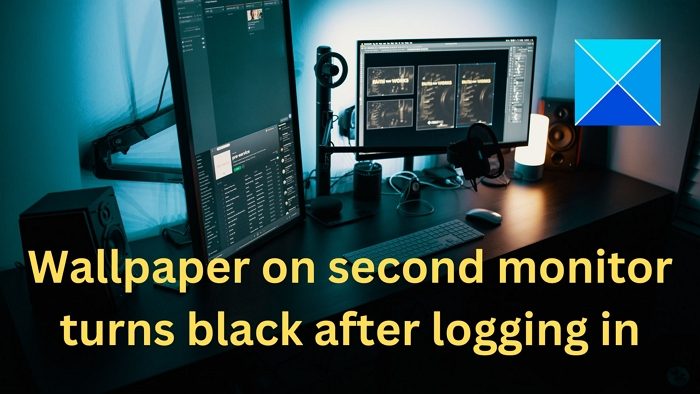
Wallpaper on second monitor turns black after logging in
Wallpaper turning black on the second monitor is a rare issue and can occur primarily because of some Windows glitch. A simple restart would often fix the issue for you. However, if you keep getting the same error, then you can try the below fixes:
- Change wallpaper & check if It happens again
- Change Windows Theme
- Configure the Display Settings via the Ease of Access
- Reinstall Monitor driver
- Turn off High Contrast setting
- Update Display driver
- Enable Desktop background setting in power options
You may need admin permission for some of the issues.
1] Change wallpaper & check if It happens again
The main culprit could be the wallpaper you are using. If you are using your picture as the wallpaper, there is a good chance that Windows is having trouble reading it or applying it on the secondary monitor.
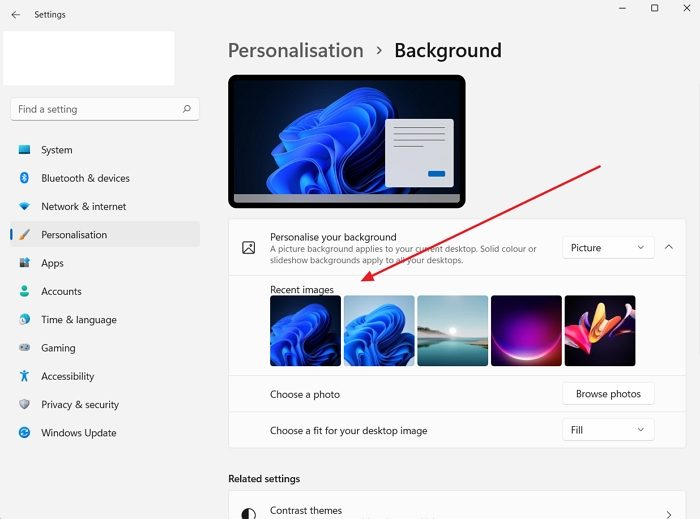
So you can try changing the wallpaper and see if it happens again. To do so, follow the below steps:
- Right-click on your desktop.
- Go to Personalization > Background.
- Select any of the images from Recent images and then see if you are still getting the same error.
2] Change Windows Theme
There is a good chance that the error occurs because of a Windows glitch preventing your PC from applying the same theme across both monitors. Try changing the Windows theme from the personalization setting to fix this and see if it works for you.
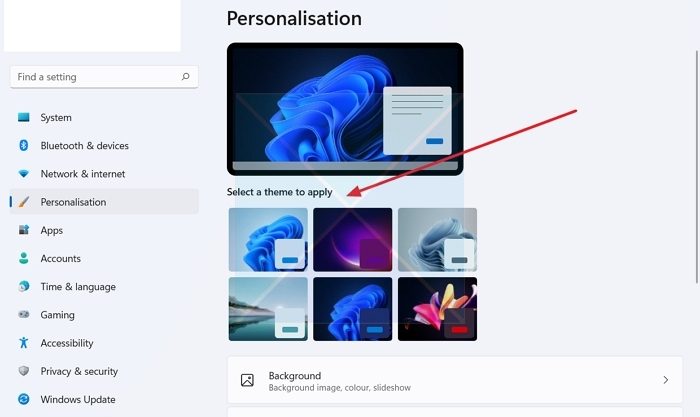
- Right-click on an empty area on your desktop.
- Go to Personalization.
- Over here, you will see different themes under Select a theme to apply.
- Click on any of the themes than the one you have already selected.
- Then see if it works for you.
- If it does, try switching to the original theme, and if you see a black screen, reboot your computer, and the issue should be fixed.
3] Configure the Display Settings via the Ease of Access
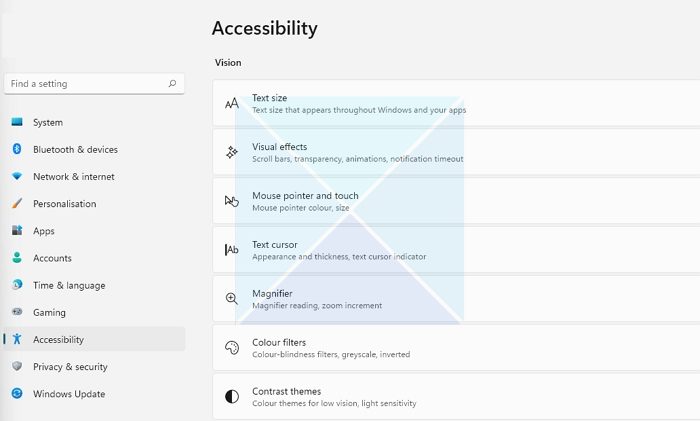
If changing the wallpaper doesn’t fix your issue, you can try configuring display settings via the Ease Of Access Center. It is an in-built utility that comes with Windows and can be used to optimize the visual display. To access the option, follow these:
- Open Windows Settings (Win + I)
- Navigate to Accessibility
- Over here, you will find different settings. Such as contrast theme settings, turning off animations, removing background images, etc.
- Play around with these settings and see if it fixes your issue. For example, you can turn off unnecessary animations, remove background images, and see if it works.
4] Reinstall the monitor driver
The issue could also happen because of an outdated or faulty display or monitor driver. So you can try reinstalling the Monitor driver and then check if you are still getting the same wallpaper on the second monitor that turns black after logging in error.
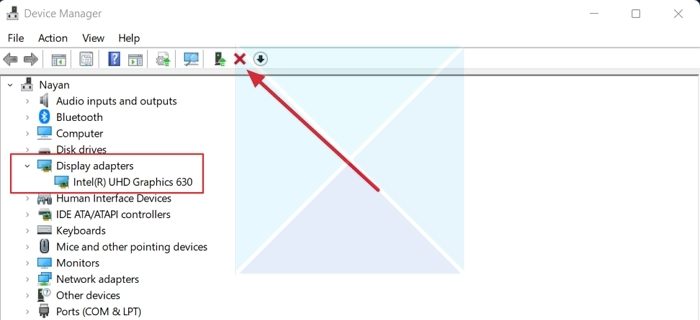
To reinstall the monitor driver, follow these steps:
- Press Windows Key + X to launch the Start button menu.
- Go to Device Manager and expand Display adapters.
- Select and right-click on the display driver, select Uninstall device and follow the onscreen steps.
Once the driver is uninstalled, the next step is downloading the display driver. You must go to your computer’s manufacturer’s website and download the suitable monitor driver. If you are using a laptop, you must go to your laptop’s manufacturer’s website and search for it using its model or serial number. And then download the display driver. Using a custom PC, you must go to your motherboard’s manufacturer’s website.
5] Turn off High Contrast setting
The high contrast mode is an accessibility setting that changes the look of Windows applications by replacing the color of different elements like backgrounds, buttons, text, and more. It can help increase readability and other visual issues.
So in case Windows is finding it hard to read your wallpaper’s colors, it turns black. Then you might want to turn off the high contrast setting and see if it fixes the issue.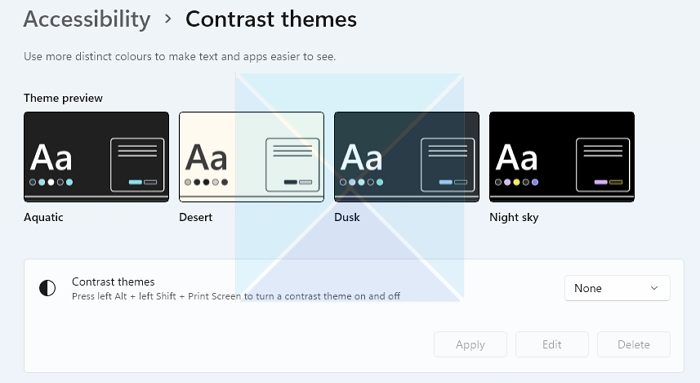
Also, Windows makes it super easy to enable or disable high contrast mode using a keyboard shortcut. Press ALT + Left SHIFT + PRINT SCREEN buttons simultaneously to enable/disable high contrast mode in Windows. You will get a prompt to enable or skip if you don’t.
Note: The same can also be enabled/disabled by going to the Accessibility as mentioned above.
6] Update Display driver
Update the Display driver and see if that helps.
6] Enable Desktop background setting in power options
If you use a laptop paired with a secondary monitor, your laptop’s battery setting could be the culprit. To fix the issue, you can disable the background setting in power options by following the below options:
- First, go to Control Panel > Power Options.
- Click on Change plan settings next to Balanced (recommended).
- Next, click on Change advanced power settings.
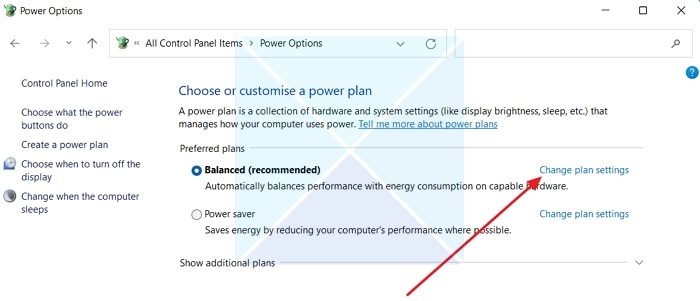
- Expand Desktop background settings.
- Over here, you will see the Slide show option. Once you click on it, you will see a dropdown menu.
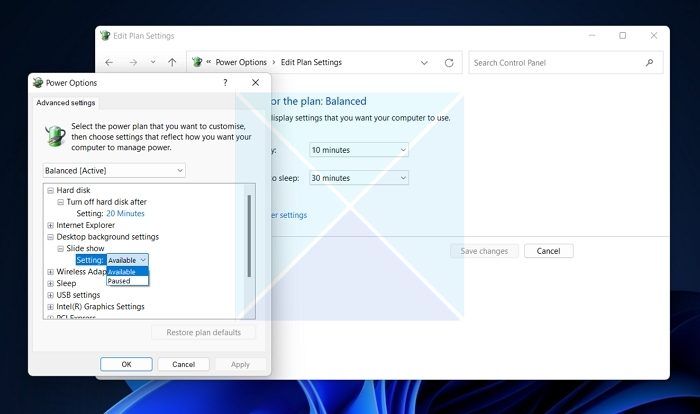
- Click on the dropdown menu and select Paused.
- Finally, click Apply > OK and reboot your computer to see if it fixed the issue.
Conclusion
In most cases, the wallpaper on the second monitor turns black after logging in error is related to theme personalization. I recommend you try changing your Windows theme to see if it works. You can also upgrade your Windows and see if Microsoft has provided any fix for the glitch.
Related: Fix Black Desktop Background on Windows
Why does my second monitor keep going black when I open Netflix?
Incompatible HDMI, outdated version of Netflix, screen recording software, and graphics driver issues can be some of the prominent issues why Netflix keeps doing black on the second monitor. You may also want to check if the Netflix app is working on the first, and if that is the case, launch the app on the second monitor instead of the first. You may have to change the primary display to the second monitor and check.
How do I make my dual screen wallpaper work?
Windows allows you to set wallpaper separately for each monitor. Since most of the second monitors are of different resolutions, you may want to use an appropriate wallpaper that works with the second one. Use the extended desktop option under Settings > System > Display if you want a wide wallpaper. It will ensure that the other monitor is not left without wallpaper.
Leave a Reply